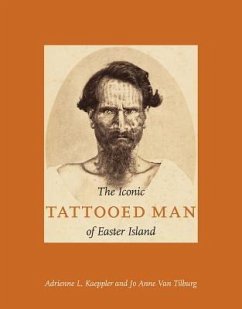An impressively tattooed but unnamed Easter Island (Rapa Nui) man appears often in the pages of Pacific Island histories and museum catalogs. The Swedish ethnographer Dr. Knut Hjalmar Stolpe knew him only as Tepano, the Tahitian version of the Christian name Stephen. But what was his real Rapanui identity, and what can his life story tell us about the history of Easter Island? This book reveals his identity, who illustrated him, and how he transcended the tragic events of 19th-century Rapa Nui to become one of the most iconic faces of the Polynesian past. The authors summarize the history of tattoo as practiced by Rapanui artisans, link that history to island geography, and present rare barkcloth sculptures as a visual record of tattoo patterns.
Hinweis: Dieser Artikel kann nur an eine deutsche Lieferadresse ausgeliefert werden.
Hinweis: Dieser Artikel kann nur an eine deutsche Lieferadresse ausgeliefert werden.








